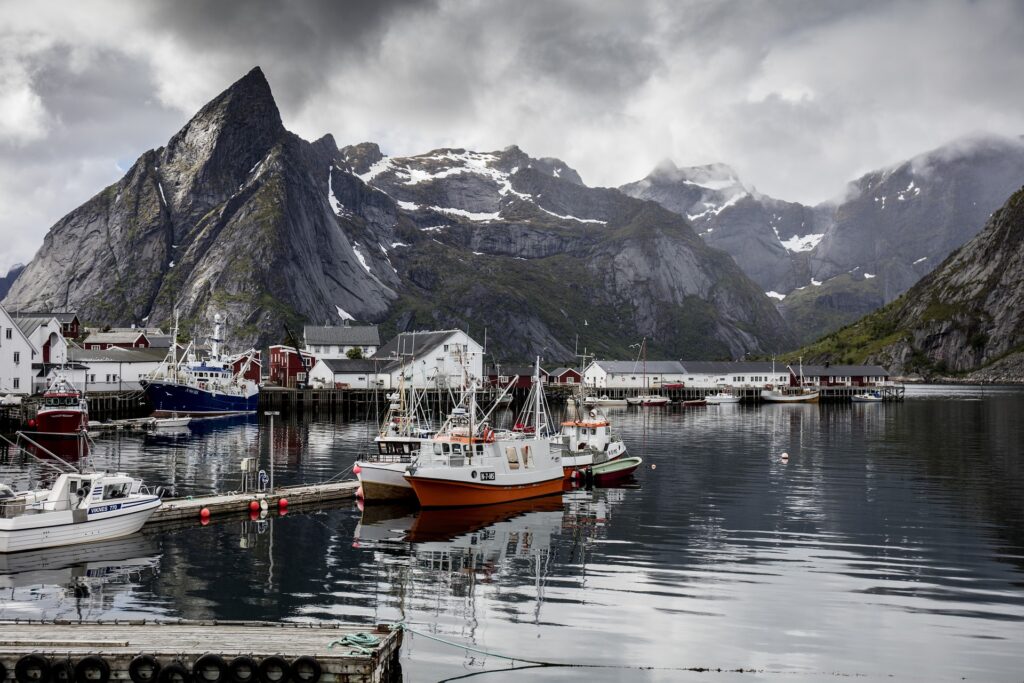To kick off the new year, Norway unveiled a white paper that laid plans for the most comprehensive and ambitious climate agenda by the country through the next decade. The Plan, which was announced by the Minister of Climate and Environment Sveinung Rotevatn, touches on a variety of measures including climate-related requirements in public-procurement processes, and CO2 removals and emissions in the land-use, land-use change and forestry sector. [1]
However, the focal point of the new plan revolves around news that the national carbon tax for oil and gas producers will be gradually raised from its current price of Nkr800 ($94) per tonne of CO2e to Nkr2000 per tonne by 2030 ($235). Norway currently boasts the fifth highest national carbon tax implemented in the world, but this number alone doesn’t tell the whole story.

The implementation of carbon pricing mechanisms differ from country to country and Norway has adopted two complementary approaches. The Norwegian tax as described in the new climate action plan is actually two separate taxes combined: a price set under the European Union’s Emissions Trading System (EU ETS) and Norway’s own national carbon tax. Though Norway is not a member of the European Union, the country is associated by trade and other economic relations and therefore is committed to participating in the System.
The EU ETS System was established in 2005 and was the first international greenhouse gas emissions trading system in the world based on successful model in the US for controlling “acid rain”.[2] The EU ETS is based on the cap-and-trade principle[3] and covers energy-intensive industries, like power and heat production, as well as commercial aviation. Now in its fourth phase, the System is focused on achieving at least 55% net reduction in greenhouse gas emissions by 2030 for its member countries, with a long-term goal of a climate-neutral EU by 2050. As of 2019, the EU ETS has produced a decline in emissions by about 35%.[4]
The EU ETS price will continue to rise in the next decade, but that does not mean it will affect Norway’s announcement of raising its national tax. The price target of $235 per tonne of CO2e by 2030 is a price ceiling. This means that taken together, the sum of the EU ETS price and the Norwegian national carbon tax cannot exceed a total cost of $235 per tonne of CO2e by 2030.
Norway, in many ways, could be considered a leader in addressing climate change. Most of their energy comes from renewable sources (hydro) and in some years, they even export excess renewable energy to other countries. However, for all its efforts, Norway is one of the largest fossil-fuel exporters in the world. And the country has built significant wealth from these revenues to create the world’s largest sovereign wealth fund, which currently stands at over 3 trillion. [5]
So, as much as the country hopes to lead on climate action, it has to closely weigh its ties to the very industry that is causing climate change. It is why the national tax covers only production-related emissions in Norway. It does not cover the export and consumption of oil and gas by end-users, which is the largest source of emissions for the country. And it is also why the Government was explicit during the announcement of the new climate action plan, that though the carbon tax ceiling has been raised, they will lessen the financial impact for covered industries by lowering taxes elsewhere, effectively created a tax-neutral policy.
It is a difficult position for Norway to be in, as they try to increase their level of ambition. At some point, the country will need to reconcile their position as a large contributor to climate change, because no matter how low their national footprint may be, climate change is a global issue. Fossil fuel emissions can be accounted for based on point of release, but it all still counts toward the shared global carbon budget.
Perhaps the bigger news might be coming later this year for Norway, as the Government is expected to deliver a follow up plan that details the long-term development of the country’s energy industries, including oil and gas. Denmark, a country with a similar history of producing and exporting fossil fuels, announced in December 2020 that it will end oil production by 2050.[6]
It remains to be seen what this future announcement might entail but given its inclusion in the latest climate action plan, it likely will address the climate impact of Norway’s energy industries. Will Norway follow Denmark and introduce similar measures to phase out fossil fuel production in the near future? Or will the country choose alternate pathways to reduce the industry’s greenhouse gas emissions? In either case, it’s a move Norway must take if it wants to be part of solving, and not contributing, to climate change on the world stage.
[1] https://www.regjeringen.no/en/aktuelt/heilskapeleg-plan-for-a-na-klimamalet/id2827600/
[2] https://www.epa.gov/acidrain/acid-rain-program
[3] https://7thgenerationadvisors.org/carbon-pricing-examples
[4] https://ec.europa.eu/clima/policies/ets_en
[5] https://www.vox.com/22227063/norway-oil-gas-climate-change
[6] https://www.vox.com/22153325/denmark-oil-gas-north-sea-extractionf